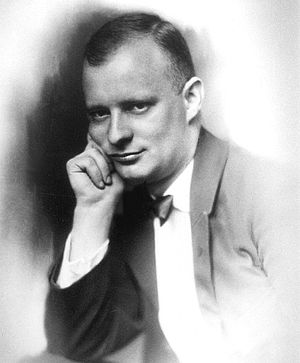
保罗·欣德米特(Paul Hindemith,1895–1963年),德国出生的作曲家。虽然他的音乐无一例外地具有鲜明的当代风格,但他仍因巴洛克晚期对位音乐(尤其是巴赫的作品)的影响而经常被归入新古典主义一派。他的作品以不协和对位、不协和和声与高超的管弦乐编曲技巧为特点。欣德米特的创作领域几乎涵盖了各种类型的音乐体裁。他的早期作品多为实用音乐,即为某一特定目的或特定场合而作。他的音乐作品、著述和教学广泛影响了现代作曲家。
欣德米特的音乐在纳粹德国时期遭禁,1938年他前往美国,后来加入美国国籍。曾在耶鲁大学、伯克夏音乐中心和苏黎世大学任教。
他的作品有歌剧《画家马蒂斯》及其同名交响乐(1934年)、《葬礼音乐》(1936年)、《韦伯主题的交响变奏曲》(1944年)、《八重唱》(1958年),以及几乎各种乐器的奏鸣曲。他著有《作曲家的世界》(1952年)等著作。
Paul Hindemith - Symphonic Metamorphosis of Themes by Carl Maria von Weber
Symphonic Metamorphosis of Themes by Carl Maria von Weber, for orchestra (1943)
I. Allegro
II. "Turandot, Scherzo": Moderato -- Lebhaft
III. Andantino
IV. Marsch
Israel Philharmonic Orchestra
Leonard Bernstein
In his Symphonic Metamorphosis on Themes of Carl Maria von Weber (1943), Hindemith pays homage to the important German early Romantic composer by adapting some of his music -- works for piano duo and for the stage -- as an orchestral suite. It's uncertain whether Hindemith preferred the plural or singular form of the word "metamophosis" in the title; whichever form of the word he intended, it is the key to the music. Hindemith adapts each of the extracts from Weber to serve as the theme for one of the movements, beginning the process of transformation that continues throughout each.
One of the work's highlights is the second movement, in which a "Chinese" flute theme twice receives the Bolero treatment. At first it is incessantly cycled in ever-richening instrumental textures, then the process repeats with "jazzy" syncopated rhythms. At times the percussion instruments take over, and different groups in the orchestra seem to go off in their own tempi, independent of the others. The third movement is notable for an awe-inspiring flute solo, while the two outer two movements are vigorous march tunes. [Allmusic.com]
Art by Enzo Cucchi